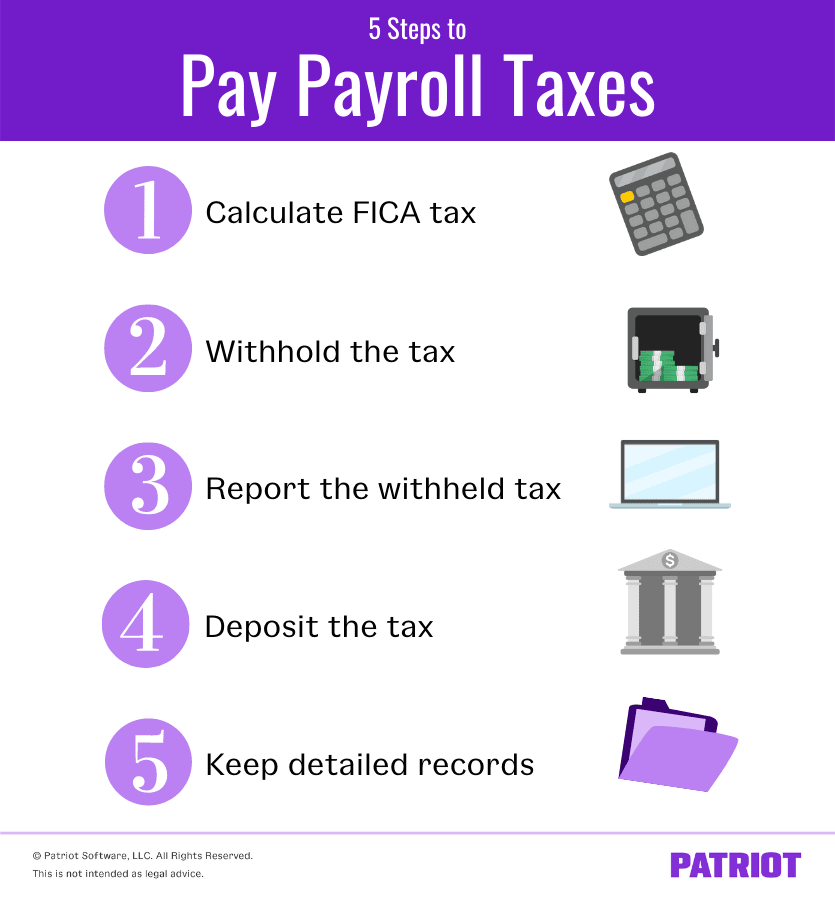Paying for goods and services is part of daily life. It’s essential to know different payment methods.
In today’s fast-paced world, having various payment options at your fingertips is crucial. Whether online or in-store, knowing how to pay efficiently can save you time and hassle. This guide will walk you through different ways to pay, from traditional methods like cash and checks to modern options like digital wallets and cryptocurrencies.
Understanding these options helps you choose the best method for each situation. With clear instructions and tips, you can make informed decisions and avoid common pitfalls. Ready to explore the world of payments? Let’s dive in and learn the best ways to handle your transactions smoothly.

Credit: www.patriotsoftware.com
Introduction To Payment Options
Choosing the right payment method is crucial in today’s digital world. With various options available, it can be confusing. Understanding your choices can help you make better decisions. Let’s dive into the different payment methods.
Importance Of Payment Methods
Payment methods offer flexibility and security. They cater to diverse needs and preferences. Some people prefer credit cards for rewards. Others find digital wallets more convenient. Businesses can attract more customers by offering multiple payment options.
Having various payment methods can also reduce cart abandonment. Customers are more likely to complete their purchases. This can lead to increased sales and customer satisfaction. So, it is essential to understand the available options.
Common Payment Options
There are several common payment options to consider. Credit and debit cards are widely used. They offer convenience and security. Many people also use digital wallets like PayPal and Apple Pay. These are quick and simple to use.
Bank transfers are another option. They are secure but may take longer to process. For those who prefer cash, some services allow cash payments at physical locations. Each method has its advantages and disadvantages. Choose the one that best suits your needs.
Credit Cards
When it comes to paying for goods and services, credit cards are a popular choice. They offer convenience, security, and a range of benefits that can enhance your shopping experience. But like any payment method, credit cards come with their own set of pros and cons. Let’s dive into the advantages and disadvantages to help you make an informed decision.
Advantages Of Credit Cards
Credit cards have several advantages that make them appealing:
- Convenience: Credit cards are easy to carry and use. You can make purchases online or in-store without the need for cash.
- Rewards: Many credit cards offer rewards programs. You can earn points, cashback, or miles for every dollar you spend. These rewards can be redeemed for travel, merchandise, or even statement credits.
- Security: Credit cards provide protection against fraud. If your card is lost or stolen, you can report it and avoid being liable for unauthorized charges.
- Build Credit: Using a credit card responsibly can help build your credit history. A good credit score can open doors to better interest rates on loans and mortgages.
- Emergency Funds: Credit cards can be a lifesaver in emergencies. Whether it’s a medical situation or a last-minute travel plan, having a credit card can provide immediate access to funds.
Disadvantages Of Credit Cards
While credit cards offer many benefits, there are also some drawbacks:
- High-Interest Rates: If you don’t pay off your balance in full each month, you could be hit with high-interest rates. This can make your purchases more expensive over time.
- Debt Risk: It’s easy to overspend with a credit card. This can lead to accumulating debt that can be difficult to pay off.
- Fees: Credit cards can come with various fees. Annual fees, late payment fees, and foreign transaction fees can add up and impact your finances.
- Credit Score Impact: Missed payments or high balances can negatively affect your credit score. This can make it harder to get approved for loans or other credit in the future.
- Temptation: Credit cards can tempt you to spend more than you can afford. It’s important to budget and spend within your means to avoid financial strain.
In conclusion, credit cards can be a useful tool for managing finances and making purchases. However, it’s important to use them wisely to avoid falling into debt or facing high fees. Remember to evaluate the pros and cons, and choose a credit card that fits your needs and lifestyle.
Debit Cards
Debit cards are a popular way to pay for things. You can use them to buy items in stores or online. They are easy to use and very convenient. Let’s explore the benefits and limitations of using debit cards.
Benefits Of Debit Cards
Debit cards come with several advantages that make them a preferred payment method for many people:
- Ease of Use: Debit cards are simple to use. You swipe or insert the card, enter your PIN, and your payment is processed.
- Immediate Transactions: Payments with debit cards happen instantly. The money is taken from your account right away.
- Budgeting: Debit cards help you stay within your budget. You can only spend what you have in your bank account.
- Widely Accepted: Debit cards are accepted almost everywhere. You can use them at supermarkets, restaurants, online stores, and more.
- Security: Debit cards are secure. They require a PIN for transactions, which adds a layer of protection.
Limitations Of Debit Cards
While debit cards are useful, they do have some drawbacks:
- Limited Funds: You can only spend the money in your account. If your balance is low, you can’t make large purchases.
- Fees: Some banks charge fees for using debit cards. These could be transaction fees or monthly maintenance fees.
- Less Protection: Debit cards offer less fraud protection compared to credit cards. If your card is stolen, it can be harder to recover your money.
- Potential Overdrafts: If you spend more than what’s in your account, you might face overdraft fees. This can be costly.
In summary, debit cards are a great tool for everyday purchases and budgeting. But, it’s important to be aware of their limitations to avoid surprises. Always keep an eye on your balance, be mindful of fees, and use your card securely.
Digital Wallets
Digital wallets have transformed the way we handle money. They offer a fast, secure, and convenient way to pay. With a digital wallet, you can store your payment information on your device. This means you can make purchases without carrying physical cards or cash. Let’s explore popular digital wallets and their security features.
Popular Digital Wallets
Several digital wallets dominate the market. PayPal is one of the most well-known. It allows users to link their bank accounts or credit cards. Apple Pay is another popular option. It works seamlessly with Apple devices. Google Pay is also widely used. It integrates with Android phones and Google services. Samsung Pay is popular among Samsung device users. Each of these wallets offers unique features and benefits.
Security Features
Digital wallets prioritize security. They use advanced encryption to protect your data. Biometric authentication adds an extra layer of safety. This includes fingerprints and facial recognition. Tokenization is another key feature. It replaces sensitive information with unique tokens. Two-factor authentication is often required. This ensures only you can access your wallet. Regular updates keep the security measures current. Always use strong passwords and keep your device secure.
Bank Transfers
Bank transfers are a reliable way to send money directly from one bank account to another. This method is widely used for personal transactions, business dealings, and even international payments. But how do they work, and when should you use them? Let’s dive into the details.
How Bank Transfers Work
Bank transfers are straightforward. Here’s a simple breakdown of the process:
- Initiate the Transfer: You start by logging into your bank’s online platform or visiting a branch. You’ll need the recipient’s bank details, including their account number and the bank’s routing number.
- Enter Transfer Details: Input the amount you wish to send and confirm the recipient’s information. Double-check these details to avoid errors.
- Submit the Transfer: Once you verify everything, submit the transfer. The bank will process the payment, which may take a few hours to a few days, depending on various factors.
Bank transfers are secure, but always make sure you trust the person or entity you’re sending money to. After all, you wouldn’t want your hard-earned cash to end up in the wrong hands, right?
When To Use Bank Transfers
Bank transfers are useful in many scenarios. Here are a few common situations:
- Paying Rent or Bills: Many landlords and service providers prefer direct bank transfers. It’s quick and keeps a clear record of payments.
- Sending Money to Family: If you need to support your loved ones financially, bank transfers are a safe way to do so, especially for international transactions.
- Business Transactions: Whether you’re paying a supplier or receiving payment from a client, bank transfers ensure that money moves swiftly and securely.
In my personal experience, I once needed to send money to my sister studying abroad. A bank transfer was the best option. It was easy, safe, and she received the funds in her account without any hassle. Plus, the clear transaction record kept us both at ease.
So, next time you need to move money, think about using a bank transfer. It’s reliable, secure, and widely accepted. But remember, always double-check the details to keep your transactions smooth and stress-free.
Cryptocurrency Payments
In today’s world, technology is changing how we pay for things. One of the newest ways to pay is with cryptocurrency. This digital money is becoming more popular every day. But what exactly is it, and how does it work? Let’s dive in and find out!
Introduction To Cryptocurrency
Cryptocurrency is a type of digital or virtual money. It uses special technology called “blockchain” to keep track of transactions. Unlike traditional money, like dollars or euros, cryptocurrency is not controlled by any government or bank. This makes it unique and exciting for many people.
There are many types of cryptocurrencies, such as Bitcoin, Ethereum, and Litecoin. Each one has its own special features, but they all work in similar ways. To pay with cryptocurrency, you need a digital wallet. This wallet stores your digital money and allows you to send and receive payments quickly and securely.
Pros And Cons
Like anything new, using cryptocurrency has its good and bad points. Let’s take a look at some of them:
| Pros | Cons |
|---|---|
|
|
So, is cryptocurrency the right choice for you? It depends on what you need. If you want fast and secure transactions with low fees, it might be worth a try. However, be prepared for some challenges as you learn how to use this new form of money.
One thing is certain: cryptocurrency is changing the way we think about money. Whether you are a tech-savvy individual or just curious about new payment methods, it is an exciting time to explore the world of digital currencies.
Buy Now, Pay Later Services
Ever wanted to buy something but didn’t have the money right away? With Buy Now, Pay Later (BNPL) services, you can get what you need now and pay for it later. It’s like having a little financial cushion when you need it most. But, how do you choose the right service? And what should you watch out for? Let’s dive into it.
Top Providers
When it comes to BNPL services, you have several top providers to choose from. Here are a few of the best:
- Klarna: Offers flexible payment plans and no interest if you pay on time.
- Afterpay: Splits your purchase into four equal payments, due every two weeks.
- Affirm: Provides clear terms upfront with no hidden fees.
- Sezzle: Allows you to reschedule payments and has no impact on your credit score.
Each of these providers has its unique perks. Klarna, for example, gives you the option to pay in 30 days, while Afterpay is great for smaller purchases. It’s like picking the right tool for the job.
Risks And Rewards
BNPL services can be a lifesaver, but they come with risks too. Here’s a quick overview:
| Rewards | Risks |
|---|---|
|
|
Like any financial tool, BNPL services require responsible use. Miss a payment, and you could be hit with late fees or even damage your credit score. But if you’re careful, they can help you manage your cash flow and avoid interest charges. It’s a bit like walking a tightrope—balance is key.
So, next time you’re eyeing that new gadget or a stylish outfit, remember you have options. Just choose wisely, and keep an eye on those due dates. Happy shopping!

Credit: www.reddit.com
Choosing The Right Payment Method
Choosing the right payment method can be a game-changer when it comes to managing your finances. Whether you’re paying for groceries, booking a flight, or buying a gift, the way you pay can impact your budget and convenience. Let’s delve into how to make the best choice.
Factors To Consider
When deciding on a payment method, there are several factors to keep in mind:
- Security: Is the payment method secure? Protecting your money and personal information is crucial.
- Fees: Some payment methods come with extra charges. Be aware of any hidden fees.
- Convenience: How easy is it to use? Consider how quickly and simply you can complete a transaction.
- Acceptance: Not all payment methods are accepted everywhere. Make sure your choice is widely accepted.
- Rewards: Some methods offer rewards like cashback or points. These can add up over time.
Tips For Efficient Payments
To make the most out of your payment methods, here are some practical tips:
- Use Credit Cards Wisely: Credit cards can be great for building credit and earning rewards, but only if you pay off the balance each month to avoid interest charges.
- Set Up Automatic Payments: Avoid late fees by setting up automatic payments for regular bills. Just ensure you have enough funds in your account.
- Utilize Mobile Payments: Mobile payment apps are convenient and often secure. They are great for quick, everyday transactions.
- Keep Track of Your Spending: Regularly monitor your bank and credit card statements to keep track of your spending and spot any errors or fraudulent charges.
By considering these factors and tips, you’ll be better equipped to choose the right payment method for any situation. So, next time you reach for your wallet, think twice about which card or app you use—it can make a big difference!

Credit: www.youtube.com
Frequently Asked Questions
How To Pay Kplc Bill Via Mpesa?
To pay your KPLC bill via Mpesa, follow these steps: 1. Go to the Mpesa menu. 2. Select “Lipa na Mpesa. ” 3. Choose “Pay Bill. ” 4. Enter KPLC business number 888880 for postpaid or 888888 for prepaid. 5.
Enter your KPLC account number. 6. Input the amount. 7. Enter your Mpesa PIN and confirm the transaction.
How To Payment Online?
To make an online payment, select your payment method. Enter your payment details. Confirm the transaction. Ensure security measures are in place.
How Do I Pay With App Pay?
To pay with App Pay, open the app and select the payment option. Confirm details, then authorize payment using your device’s security feature.
How Do I Add A Payment Method In Google Pay?
Open the Google Pay app. Tap “Payment methods” in the menu. Select “Add card. ” Enter your card details. Follow the prompts to verify.
Conclusion
Paying online can be simple and secure with the right steps. Remember to verify websites before entering details. Use strong passwords and two-factor authentication for added security. Keep track of transactions regularly. This helps spot any unusual activities. Always log out after making payments.
Following these tips ensures safe and hassle-free online payments. Stay cautious and make informed choices. Happy shopping!





